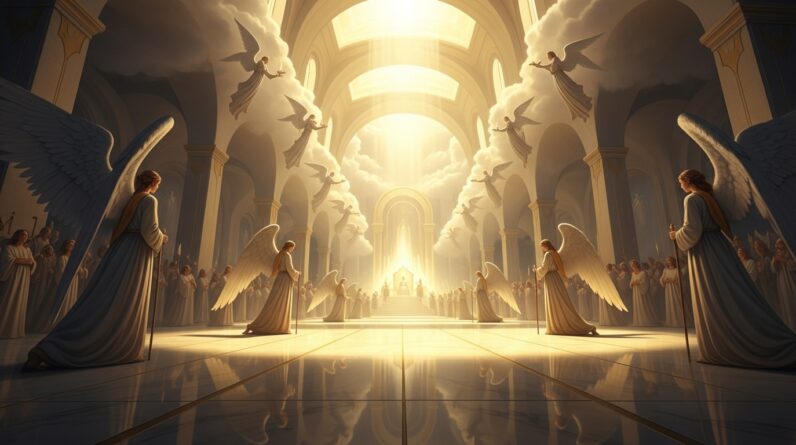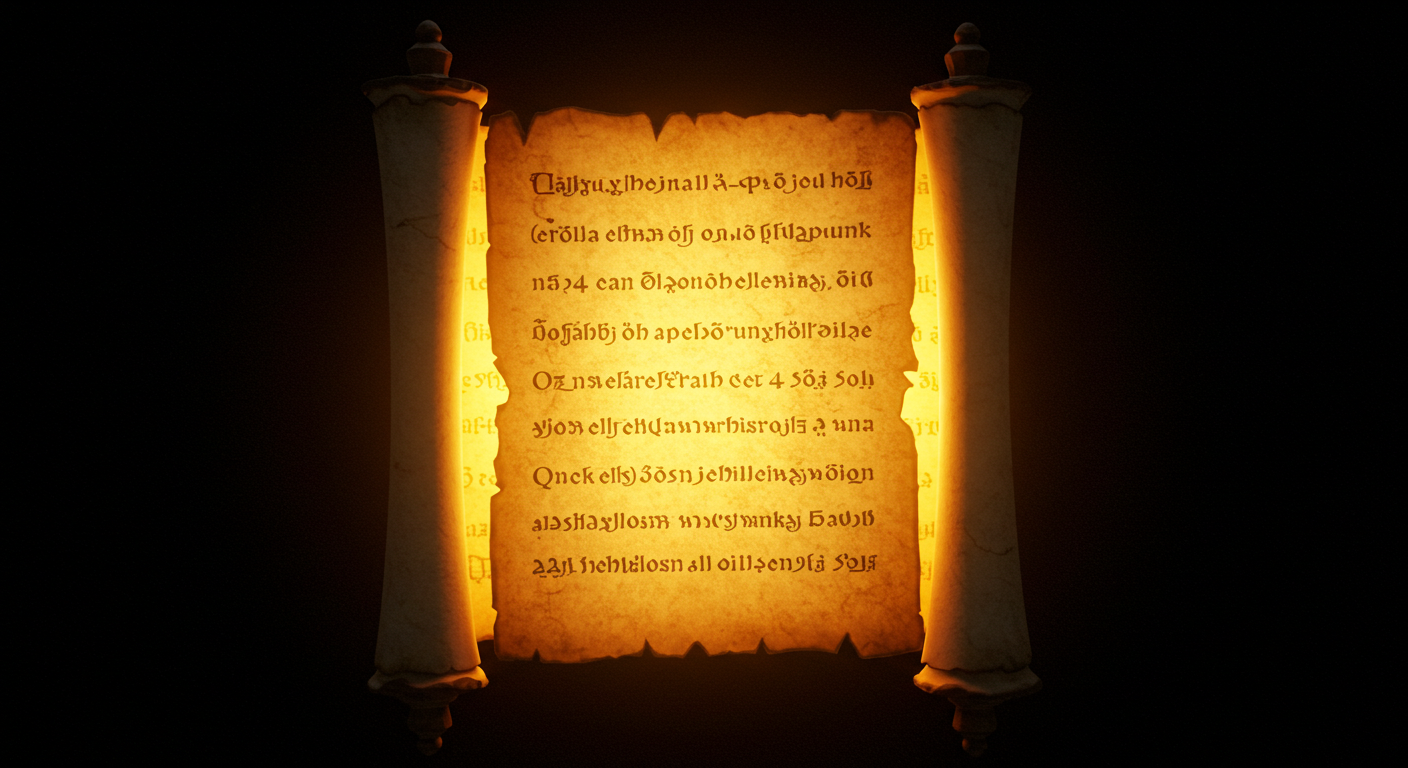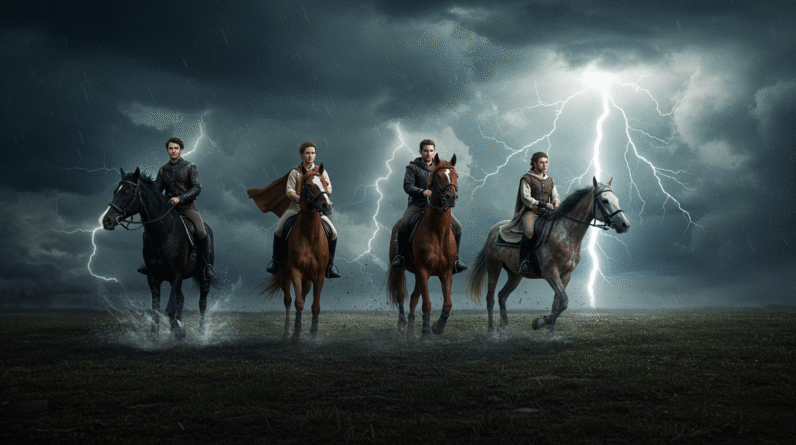The Four Horsemen Of The Apocalypse Explained
You’ve probably heard the phrase four horsemen of the apocalypse and pictured four dramatic riders charging across a sky of judgment. The image is vivid, cinematic, and often used in headlines, movies, or memes — but the original vision that inspired it comes from a dense, symbolic chapter of the Bible. In this article, you’ll get a careful, conversational walkthrough of who these riders are, where they appear in Scripture, how they’ve been interpreted over the centuries, and what they might mean for you today. Throughout, you’ll see direct Bible references so you can read the text for yourself and follow the original language and context.
Where the Four Horsemen Appear in Scripture
If you want to read the core passage for yourself, it’s in Revelation 6. You can find the opening of the seals and the arrival of the horsemen in Revelation 6:1-8. The four riders appear as the first four of seven seals are opened on a scroll that only the Lamb can unroll. Revelation’s sequence of visions frequently uses images that stack one atop another: seals, trumpets, bowls — each section intensifying the earlier imagery. Reading the four horsemen inside this larger narrative will help you see them as part of an unfolding divine courtroom drama rather than as isolated characters.
Reading the Vision: What’s a Seal?
Before you dive into the particular riders, you’ll benefit from understanding what the “seals” are. In Revelation, a scroll sealed with seven seals is introduced in Revelation 5. The scroll represents God’s settled purposes and the unfolding of history. Each seal’s opening is a dramatic act: with every unrolling, you’re shown part of how those purposes are revealed. So when you see the four horsemen, you’re watching the early stages of those purposes being enacted. The way the author links these riders to the opening of seals tells you they are symbolic agents in a larger divine plan, not just random disasters.
The Literary Setting of the Vision
The setting for the seals is courtroom-like and liturgical: the Lamb (who is central to Revelation’s message) takes the scroll and opens the seals. That Lamb is introduced in chapter 5 as worthy to open the scroll because of his sacrificial victory (Revelation 5:1-5). This means the four horsemen are not autonomous cosmic agents but part of a theologically framed sequence. You need to keep that frame in mind: Revelation is a theological book using symbolic images to communicate hope, warning, and judgment.
The First Horseman: The White Horse — Conquest (or Something Else?)
The first rider appears as the Lamb opens the first seal: a rider on a white horse carrying a bow, given a crown, and sent out to conquer (Revelation 6:1-2). At first glance, “conquest” seems straightforward, but if you read a bit closer, you’ll see that interpretations split. Some read the rider as a symbol of military conquest or imperial expansion, which fits the imagery of a crowned, armed horseman. Others have argued that the white horse symbolizes Christ himself — a view supported by other passages where Christ appears on a white horse later in Revelation (Revelation 19:11-16).
How You Can Think About the First Rider
If you’re trying to interpret this for yourself, ask: is the early rider an imitation of Christ (a false messiah), a generic force of conquest, or a divine instrument of judgment? The text leans toward a conquering, possibly deceptive power. The crown (stephanos) can indicate temporary victory or authority, and the bow — unlike the later rider’s sword — suggests long-range attack and domination. Given Revelation’s context (a persecuted first-century Christian audience under imperial Rome), many scholars think the rider may symbolize the imperial ambitions that threatened justice and peace. Still, keep your mind open to the layered meaning: biblical symbolism often supports multiple simultaneous readings.
The Second Horseman: The Red Horse — War and Bloodshed
When the second seal is opened, a rider on a red horse appears, and he is given the power to take peace from the earth so that people would kill one another; he wields a large sword (Revelation 6:3-4. This rider is the clearest symbol of open conflict and bloodshed. The color red and the sword are direct signals: you’re looking at warfare, civil strife, and violence on a scale that disrupts societies.
Why This Rider Feels So Immediate
When you read about the red horse, you can almost picture the practical consequences: broken communities, famine that follows war, displacement, and the collapse of civic order. For the original readers, living under the constant threat of political unrest and violence, this image would have resonated strongly. For you today, it reads as a warning about how quickly peace can be removed and how war wreaks social and economic havoc. The pairing of the first two riders — conquest followed by war — hints at a domino effect: power grabs can lead to violent conflict, which in turn produces further societal breakdown.
The Third Horseman: The Black Horse — Famine and Economic Crisis
The third seal reveals a rider on a black horse holding a pair of scales. A voice describes inflated prices: a day’s wages for a measure of wheat and three measures of barley, while oil and wine are not harmed (Revelation 6:5-6. The imagery of scales signals scarcity, rationing, and economic distress. The sharp contrast between staple grain and luxuries like oil and wine points to social inequality: the poor suffer more, while the wealthy may maintain comforts.
The Practical Effects You Should Notice
Reading the black horse’s scene, you’ll notice how economic systems are fragile in crisis. Price controls, hoarding, corruption, and unequal access to resources all come into play. Revelation’s focus on measures and wages gives you a feel for the real human suffering behind the symbolic image: hunger, ration lines, and the moral pressures that arise when people struggle to survive. Famine in this passage isn’t just a physical shortage; it also serves as a moral and spiritual test for communities under strain.
The Fourth Horseman: The Pale Horse — Death and Hades
The fourth rider arrives on a pale (or “pale green”) horse, and the rider’s name is Death. Hades follows closely behind, and authority is given over a quarter of the earth to kill by sword, famine, plague, and wild beasts (Revelation 6:7-8. This is the grim culmination of the first three horsemen: the combined effects of conquest, war, and famine result in widespread mortality. The presence of Hades signals that death is not merely physical loss but also a metaphysical reality — the realm of the dead.
The Layered Meaning of the Pale Rider
You’re meant to feel the seriousness here. Death personified is a final, sobering image. It gathers up the consequences of violence, scarcity, and disease. But even in this stark picture, the text refrains from saying that the whole earth is annihilated; rather, a quarter of the earth is affected — an image that balances catastrophe and divine restraint. This reminds you that apocalyptic imagery often uses symbolic proportions to communicate scope without insisting on literal mathematical precision.
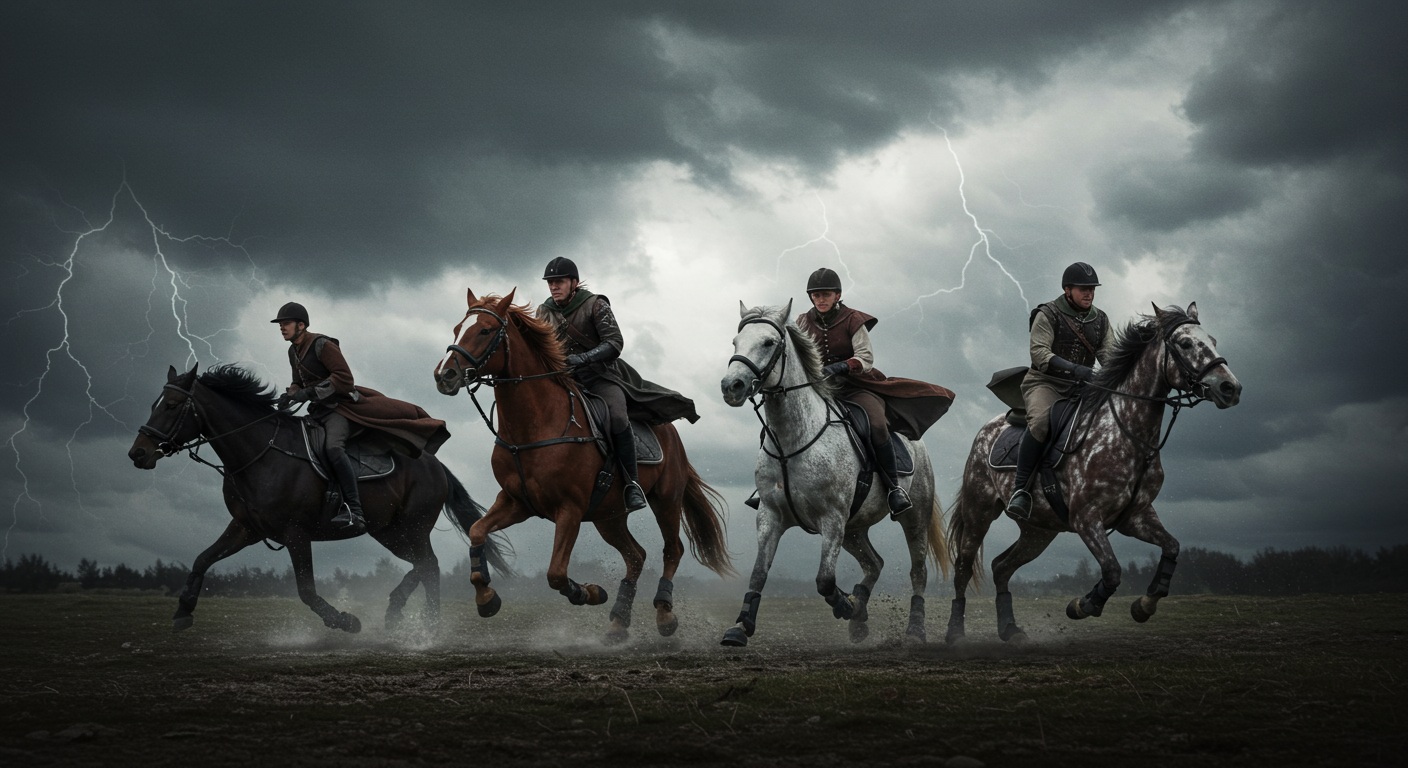
Symbolic Breakdown: Colors, Weapons, and Measures
If you’re trying to decode the symbolism, focus on the consistent features: colors (white, red, black, pale), instruments (bow, sword, scales), and consequences (conquest, war, famine, death). Colors in biblical literature often carry emotional or thematic associations: white can indicate victory or deceit depending on context; red evokes blood and anger; black suggests mourning, scarcity, or absence; and a pale green hints at decay. Weapons and tools point to the type of destruction: a bow for far-reaching conquest, a sword for direct combat, scales for scarcity and rationing, and the pale horse’s very presence as a symbol of mortality.
The Old Testament Echoes You Should Know
The imagery in Revelation doesn’t exist in a vacuum. For example, some readers note parallels with Zechariah’s vision of four chariots coming out from between two mountains (Zechariah 6:1-8). Those chariots represent the spirits of the heavens going out to patrol the earth, a motif that resonates with Revelation’s use of symbolic rider figures. When you trace these echoes, you see that John (the author of Revelation) is tapping into a broader prophetic tradition where divine action is narrated through striking symbolic imagery.
Historical and Cultural Background
You should remember that Revelation was written in a specific historical context: likely the late first century, when early Christian communities faced social marginalization, persecution, and the political reality of imperial Rome. That context matters because it helps explain why the vision is framed as divine courtroom language. The imperial cult, public spectacles, military conquests, and economic control were daily features of Roman life. Seeing the four horsemen against that background helps you understand their force as social critique as well as cosmic warning.
How the Original Audience Would Have Heard It
If you were part of John’s original audience, hearing this vision would likely have stirred both fear and hope. Fear because it graphically laid out the trials ahead, and hope because the larger narrative promises final vindication: the Lamb has opened the scroll and ultimate justice is in view. Keep that tension in mind: Revelation’s symbolic dystopia aims to reorient your hope rather than simply terrify you.
Major Interpretive Approaches
Interpretation of the four horsemen tends to follow broad schools. You’ll usually encounter four major approaches: Preterist, Historicist, Futurist, and Idealist. Each gives you a different lens through which to understand the imagery.
Preterist Approach
If you read Revelation as a preterist, you’ll think the four horsemen primarily address first-century events — Roman conquests, civil strife, inflation, and mortality that affected early Christian communities. Preterists emphasize the text’s immediate relevance to its original audience and see much of John’s symbolic language as coded critique of Roman power.
Historicist Approach
The historicist method reads Revelation as a sweeping prophecy that unfolds across the entire span of church history. From this perspective, the four horsemen might symbolize recurring patterns — political ambition, warfare, economic hardship, and mortality — that repeat across eras. Historicists look for historical correlates (barbarian invasions, medieval famines, etc.) that supposedly match the riders.
Futurist Approach
Futurists place the primary fulfillment of Revelation’s dramatic visions in a coming end-time. You’d understand the four horsemen as events that will precede or usher in the ultimate climax of history — often linked with other apocalyptic signs and judgments. Futurism pays close attention to literal or quasi-literal fulfillment in a future scenario.
Idealist (or Symbolic) Approach
If you lean idealist, you’ll treat the four horsemen as enduring symbols of recurring realities: the human tendencies toward domination, violence, scarcity, and mortality. You’re not focused on specific historical events but on the way Revelation’s images communicate timeless spiritual truths about evil and suffering in the world.
How the Four Horsemen of the Apocalypse Have Influenced Culture
The phrase four horsemen of the apocalypse dropped into popular culture long ago. You see them on book covers, in films, on T-shirts, and as metaphors in journalism. Artists and writers have used the riders to dramatize everything from geopolitical conflagration to environmental crisis. This cultural uptake shows the phrase’s power: it condenses catastrophic plurality into a memorable quartet.
Why the Image Is So Sticky
You can understand why the image persists. Four distinct figures make a compact narrative: progress from aggression to breakdown to death. That sequence maps easily onto stories you tell about societal collapse. And the visual contrast of four horses, each distinct in color and instrument, gives artists a rich palette to work with. That’s why the four horsemen of the apocalypse are as much a cultural trope as a biblical image.
How Scholars Read These Symbols Today
Modern biblical scholarship tends to combine historical insight with literary sensitivity. Scholars remind you to read Revelation’s images both in historical context and as rhetorical devices aimed at sustaining a beleaguered community. If you’re exploring scholarly commentary, you’ll find helpful resources like BibleHub and Bible Gateway for textual study and various commentaries that take different approaches to the book’s symbolism.
Practical Scholarly Tips
When you look at academic work, notice how scholars pay attention to intertextual links (Old Testament echoes), rhetorical function (who the author is persuading), and social context (Roman imperial realities). If you want a starting point for deeper study, check out a reliable online text and commentary and compare a few different interpretive traditions to see where you land.
Reading the Vision for Today: Spiritual and Ethical Implications
You’re probably wondering: what do the four horsemen mean for you as a twenty-first-century reader? One useful way to approach them is to see them as warnings about structural evil. Conquest warns against unchecked ambition and empire; war exposes the fragility of peace; famine highlights economic injustice; death calls you to face mortality and the ethical obligations that come with it. Taken together, the four horsemen of the apocalypse ask you to notice how systems — political, economic, and cultural — interact to produce suffering.
How to Respond Practically
You can respond by staying informed about systemic causes of violence and poverty, advocating for fair economic policies, supporting humanitarian relief, and cultivating communal resilience. On a personal level, the vision invites you to reckon with mortality and to live with integrity and compassion in the face of uncertainty.
Common Misunderstandings about the Four Horsemen
There are a few misconceptions you’ll often encounter. One is that the riders are strictly chronological future events that will happen all at once like a checklist. Another is that the first rider is always Christ or always a political figure — reading the text rigidly in either direction oversimplifies its symbolic richness. The original vision embraces ambiguity intentionally, inviting readers across generations to engage with its layers.
How You Should Avoid Oversimplification
Avoid turning the horses into rigid predictions or single-meaning emblems. Instead, treat them as polyvalent images: they can speak to particular historical moments and also to perennial human realities. That balanced approach preserves both the urgency and the theological nuance of the text.
The Four Horsemen in Evangelical and Academic Debates
You’ll notice that how people interpret Revelation often reflects broader theological commitments. Evangelical futurists tend to see Revelation as prophecy still awaiting fulfillment, while many academics and mainline interpreters emphasize the book’s function as first-century resistance literature. These debates matter because they shape how communities prepare, preach, and act. They also show that you can responsibly disagree about prophetic imagery while still taking its moral demands seriously.
What You Can Take from the Debates
From these discussions you can learn two things: first, that careful historical reading deepens your understanding; second, that the text’s ethical force is accessible across interpretive boundaries. Whether you see the riders as imminent events or enduring symbols, the call to justice and compassion remains central.
Final Thoughts: Why the Four Horsemen Still Speak to You
At the end of the day, the four horsemen of the apocalypse are a powerful theological shorthand for the ways human sin and systemic evil produce suffering. You can read the riders as historical warnings directed to an ancient audience, or as archetypes that reveal recurring patterns in human history — or both. Either way, the vision invites you to take seriously the reality of suffering and the responsibility you have to resist it.
A Personal Takeaway
If you let the imagery do its work, the four horsemen will pry open complacency. They push you to ask hard questions about power, peace, justice, and mortality. They prompt you to consider how your actions — especially when multiplied across communities and nations — contribute to systems that either harm or heal.
Conclusion
You’ve now walked through the text, the cultural echoes, the major interpretations, and some practical applications of the four horsemen of the apocalypse. You’ve seen the passages where they appear and been given tools to read them thoughtfully: notice context, track Old Testament echoes, weigh interpretive traditions, and let the moral implications sink in. Revelation’s vivid symbols are designed to provoke imagination and responsibility, not merely to frighten.
Explore More
For further reading and encouragement, check out these posts:
👉 7 Bible Verses About Faith in Hard Times
👉 Job’s Faith: What We Can Learn From His Trials
👉 How To Trust God When Everything Falls Apart
👉 Why God Allows Suffering – A Biblical Perspective
👉 Faith Over Fear: How To Stand Strong In Uncertain Seasons
👉 How To Encourage Someone Struggling With Their Faith
👉 5 Prayers for Strength When You’re Feeling Weak
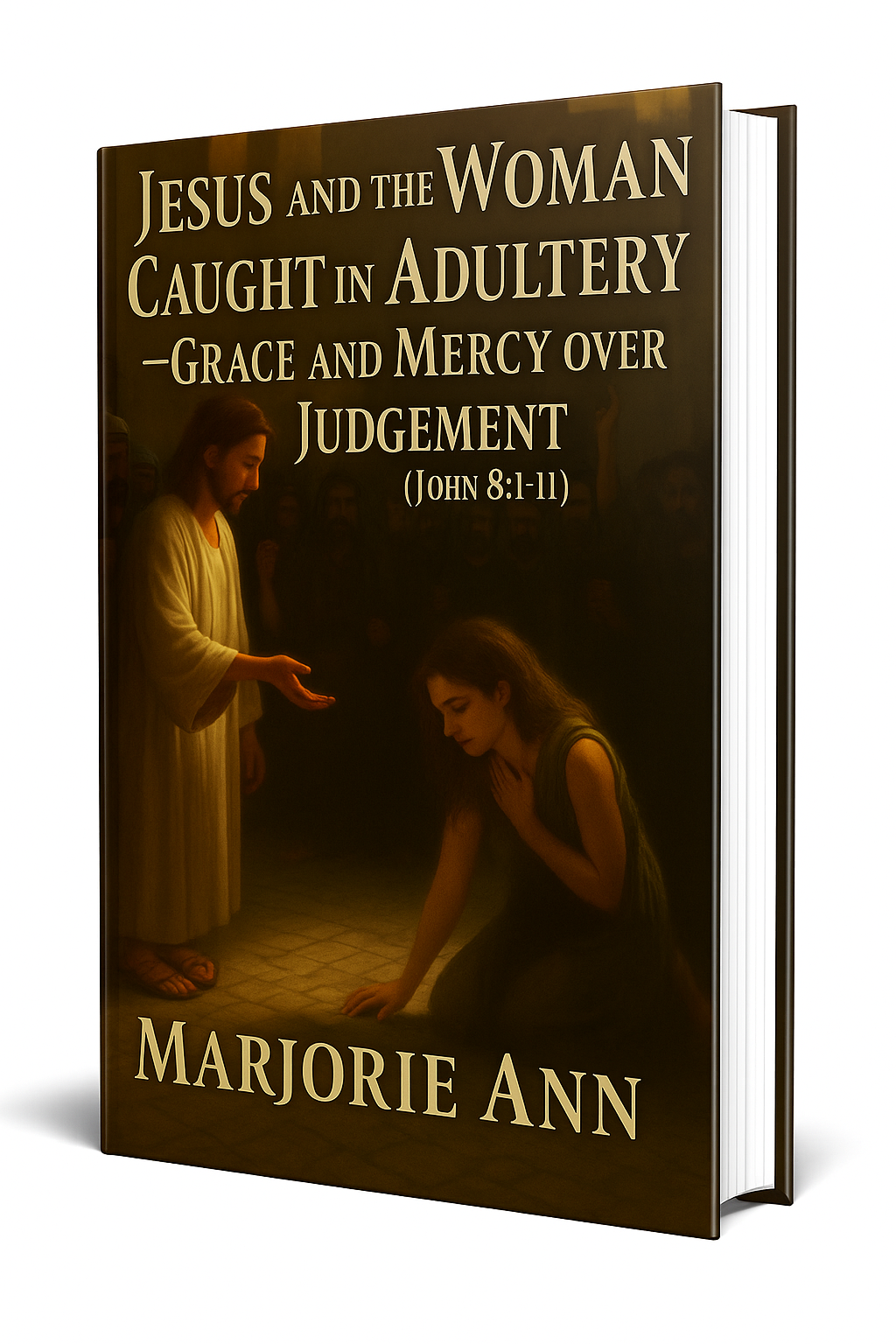
📘 Jesus and the Woman Caught in Adultery – Grace and Mercy Over Judgement
A powerful retelling of John 8:1-11. This book brings to life the depth of forgiveness, mercy, and God’s unwavering love.
👉 Check it now on Amazon 🛒💥
🔥 “Every great message deserves a home online.” 🌍💬🏡
Don’t let your calling stay hidden. Start a Christian blog or website using Hostinger — with 99.9% uptime, a free domain, and SSL, your voice can shine for God’s glory anytime, anywhere.
💥 Begin today. 🛒 Try it RISK-FREE! ✅
✝️ “Your body is God’s temple — care for it with purpose.” 💪💖🏛️
Renew your energy and restore balance naturally. Mitolyn helps support a healthy metabolism, giving you the vitality to live out God’s calling with strength and confidence.
🔥 Unlock Your Metabolic Power! ⚡Burn More Calories & Feel Great With Mitolyn. 💪
👉 Start Today. 🚀 Check Price Now. 🛒💰
💰 As a ClickBank & Amazon Affiliate, I earn from qualifying purchases.
📖 Acknowledgment: All Bible verses referenced in this article were accessed via Bible Gateway (or Bible Hub).
🚀 Want to explore more? 👉 Dive into our new post on Why Jesus? and experience the 🔥 life-changing truth of the Gospel!



